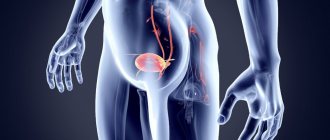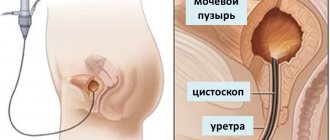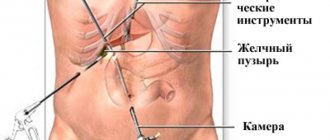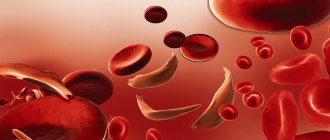Leukoplakia of the bladder is a chronic disease in which the transitional epithelial cells lining the bladder cavity are replaced by squamous epithelial cells.
Areas appear covered with keratinizing epithelium, which, unlike the transitional epithelium, does not protect the walls of the bladder from the active effects of urine components, which causes chronic inflammation.
The disease occurs in women much more often than in men, due to the structural features of the female urethra, which makes the bladder more accessible to infection, which, as it turns out, plays a leading role in the occurrence of leukoplakia of the bladder.
Leukoplakia concept
This disease is considered chronic and this is due to the fact that its development is usually long-term, including several successive stages, and, as a rule, does not disappear on its own.
From a morphological point of view, a process occurs when the transitional epithelium of the mucous membranes is replaced by flat epithelium.
As a result, the following transformations can be noticed at the cellular level: the absence of glycogen formation and the formation of the stratum corneum, which normally should not occur in this type of tissue.
This disease causes great concern among doctors due to the fact that the exact causes, complications and factors contributing to its formation are not fully understood.
Therefore, patients diagnosed with leukoplakia of the bladder are recommended to be carefully observed and constantly monitor the course of the process to avoid the development of complications.
What happens during the degeneration of the epithelium
From being loose and capable of strong stretching, the affected areas of the urothelium (urinary mucosa) turn into flat and keratinized, devoid of this property. They look like light spots with clear boundaries and have a yellow or gray tint.
Such a modified epithelium can no longer fully protect the bladder from the harmful effects of aggressive components of urine, for example, uric acid. The result is serious damage to the walls, partial loss of elasticity of the bladder, disruption of the detrusor - the muscular membrane.
Stagnation of urine becomes inevitable, followed by chronic inflammation.
Types of leukoplakia of the bladder
There are several types of classification of bladder leukoplakia, all of them are based on different characteristics of the pathological process.
Depending on the location of the disease, two forms can be distinguished:
- Leukoplakia of the bladder neck is one of the most vulnerable places, and therefore the most common form.
- The body of the bladder becomes affected.
In the development of a lesion, several natural phases can be distinguished:
- Initial stages of development. Focal replacement of fragments of the mucous membrane with areas of squamous epithelium.
- Second phase. Squamous metaplasia. It is characterized by the fact that the normally existing single-layer columnar epithelium is replaced by a denser and less vulnerable multilayered epithelium.
- Third stage. Associated not only with structural, but also functional changes in the organ. As a result, the epithelium covering the walls undergoes cratinization, it becomes denser, the elasticity of its walls is lost, and as a result, the full process of evacuation of urine from the organ is disrupted.
Among bladder diseases, several types of pathology can be distinguished:
Flat type. It is characterized by the fact that the epithelium of the mucous membranes becomes slightly cloudy. In the initial stages, the changes may become almost imperceptible, but as they progress, slight opalescence may be noticed, which may be characterized by the presence of a pearlescent tint. The surface becomes uneven, the roughness begins to become more pronounced over time.- Warty type. The inflammatory process in the area of the pathological focus has a pronounced border with healthy skin. In this case, layering of horny areas may be observed. The surface is lumpy and even with ultrasound examination is clearly visible.
- Erosive type. The mucous membrane begins to change and, against the background of a constant inflammatory process, becomes irritated, turning into erosion. With a decrease in inflammatory reactions, epithalization may occur, but in deeper areas the appearance of cracks can be noted. The form of the disease can be different: Metaplastic process without cell damage and concomitant keratinization.
- Pathological metaplasia with the associated process of keratinization, as well as the process of cell death.
Treatment options
Treatment of leukoplakia is carried out taking into account the individual characteristics of the patient and the course of the disease. Localization of the process in the area of Lieto's triangle, according to most experts, is not considered a pathology and rarely requires therapy.
All patients are recommended to follow a diet with limited foods that can irritate the bladder epithelium. It is useful to give up spices and smoked meats, and expand your diet with boiled dishes, vegetables, and dairy products. There is no point in reducing the amount of fluid - after all, the stronger the concentration of urine, the more aggressive its effect on the urothelium.
Drug effects
In case of infection, antimicrobial drugs are indicated, but the consequences of irrational antibiotic therapy can be catastrophic for health. The clinical effectiveness of bacteriophages and agents that reduce the inflammatory response has been described, but all drugs must be prescribed by a qualified specialist.
In order to regenerate the urothelium and protect the bladder wall from the irritating influence of urine, instillations (intravesical irrigation) with glycocalyx analogues are carried out according to a special scheme two to three times a week for several months.
Whether leukoplakia can be treated with homeopathy and nutritional supplements is a controversial issue. Most doctors are inclined to believe that the improvement from such drugs is explained by the placebo effect, and the therapy itself has no evidence base.
Physiotherapy
Many reputable clinics specializing in the treatment of urological diseases often prescribe physiotherapeutic procedures to patients. Electrophoresis facilitates the delivery of drugs to the lesion. The effect of magnetic therapy is aimed at improving trophic processes in tissues.
A relatively new method is the intravenous administration of an ozonized sodium chloride solution. Proponents of this treatment point to its anti-inflammatory, immunomodeling, detoxification, analgesic, regenerative, and bactericidal effects.
In order not to trust charlatans and not harm your health, you need to inquire about the essential conditions for conducting physiotherapy:
- absence of contraindications for the patient;
- whether the medical organization has a license to perform a specific procedure;
- appointment of the attending physician;
- the session is performed by a specially trained health worker who has the appropriate certificate.
Such procedures are one of the components of complex treatment. Urologists consider them additional methods that do not affect the altered mucosa. In reviews, patients note only a temporary clinically significant improvement in their condition.
Folk remedies
It should be understood that the use of traditional methods helps to reduce dysuric and pain disorders, but cannot restore the altered urothelium. Various herbalists recommend medications indicated for most diseases of the urinary system: a decoction of oat grains, an infusion of yarrow grass, horsetail, rowan fruits, lingonberry leaves, plantain, bearberry.
If a leukoplakia patient, man or woman, decides to undergo such therapy, it is important to inform the attending physician about this and clarify what side effects a particular plant has. Unauthorized combination of individual pharmaceutical and herbal medicines is unacceptable.
Help from surgeons
Sometimes conservative therapy is not enough. Often the patient is afraid to decide to undergo surgery, which in most cases is unfounded. Modern urology has a sufficient arsenal of minimally invasive techniques using a cystoscope, a device inserted through the urethra.
The most popular methods at present are:
- Transurethral resection (TUR) – cutting off the leukoplakic plaque with a special loop, followed by electrocoagulation.
- Laser ablation – cleaning the wall with an appropriate pulse.
- Plasmokinetic vaporization (PKV) is the combined effect of plasma energy and thermal factor.
- Non-contact argon plasma coagulation (APC) - a high current is applied to the wall without touching it, using argon gas.
It is important to know! With all the above interventions, we are not talking about cutting the bladder or violating the integrity of its wall. The essence of surgical methods is the removal of the altered area of the mucous membrane. Subsequently, the epithelium regenerates.
It is important to discuss in detail with your doctor the appropriateness of the chosen method of correction, the technique used, and possible unfavorable aspects. All surgical techniques require drug treatment and clinical observation in the postoperative period.
Causes of leukoplakia of the bladder
- The main predisposing factor is the infectious factor. This is also due to the fact that it most often affects the mucous membranes of the genitourinary tract of women. Representatives of this sex have peculiarities in its structure; the urethra is somewhat shorter and wider than the male urethra. Consequently, the risk of pathology penetration is much higher. Any inflammatory lesion, especially chronic, which is caused by sexually transmitted infections, contributes to changes in the mucous membrane. These include mainly chlamydia, trichomoniasis, and mycoplasmosis.
- Also, one of the reasons is considered to be a viral infection represented by the human papillomavirus. It affects the bladder through the hematogenous route. In some cases, inflammation can be transmitted through lymph.
For the development of such causes, exposure to provoking factors is necessary.
Among them are:
Unprotected sexual intercourse, with an infected partner, or a large number of them. In this case, a condom is not used as a means of protection.- Stressful effects on the body. Most often this is a long-term factor.
- Endocrine pathologies that contribute to changes in the environment of urine, as well as its irritating effects.
- Use of an intrauterine system , which is in the body for a long period of time.
- Disturbances in the structure and development of the genitourinary tract and bladder in particular. These may also be functional disorders that are associated with impaired innervation or a defect in the development of the epithelium.
- Violation of lifestyle , with regular lack of sleep, rest periods, etc.
- Frequent hypothermia and systemic inflammatory processes.
Symptoms of leukoplakia of the bladder
The symptoms are as follows:
- The main manifestation of leukoplakia of the bladder is discomfort and disturbance of urination.
- In the area of the bladder, as well as the suprapubic region, the pain can be dull, aching, associated with the filling of the organ. In a calm state, they can also appear, especially with a massive process, usually affecting the area of the confluence of the ureters and urethra.
- The act of urination itself is disrupted , the degree of severity depends on the volume and type of leukoplakia. It is characterized by the fact that at the beginning of urine separation there is discomfort, a slight burning sensation or stinging. The stream is interrupted, the volume of discharge gradually decreases. This may be due to the involvement of the bladder muscles in the pathological process and a profound violation of the architectonics of the mucous membrane, which characterizes changes in contraction.
- With minor exposure to a provoking factor, inflammation quickly develops. Cystitis is one of the most common pathologies that occur with leukoplakia.
- Against the background of a massive lesion, pain may occur in the lumbar or pelvic area, which radiates to the groin or inner surface of the legs.
- As leukoplakia progresses, general well-being is disrupted . There is weakness, disturbance of night sleep due to frequent urges and intoxication of the body.
Causes
The reason for the replacement of healthy uroepithelial cells with fibrous tissue in most cases is an infection that has penetrated into the bladder. In 90% of episodes it is ascending in nature, rising from the vagina. In this case, leukoplakia of the bladder is provoked by various STDs - herpevirus type II, gardnerella, chlamydia, gonococci, spirochetes, trichomonas.
There is also a reverse route of infection, when bacteria descend into a woman’s bladder from higher organs. Here, the causative agents of leukoplakia are Proteus, Escherichia coli, and staphylococci. Heredity also matters, which determines the reaction of the mucous membrane to irritants.
Factors that provoke the degeneration of uroepithelial cells are:
- the presence of sluggish foci of inflammation, primarily cystitis;
- early onset of intimate life;
- promiscuity of sexual relations without the use of protective equipment;
- hypothermia;
- long-term catheterization of the bladder;
- surgical interventions in the past;
- lack of vitamin A.
In men, leukoplakia of the bladder often forms in the area of the penis and the outer edge of the urethra. The culprit of the disease may be phimosis and other anomalies of the genitourinary organs. Often, infection of the bladder occurs due to defects in the anatomical structure: doubling or prolapse of the kidney, hypoplasia, ring-shaped ureter, vesicoureteral reflux.
Poor immunity, frequent stress, alcohol abuse, smoking, mental and physical fatigue predispose to damage to the mucous membrane. In women, leukoplakia of the bladder often appears against the background of hormonal disorders, usually estrogen deficiency.
Diagnosis of leukoplakia of the bladder
In some cases, such measures may be complicated by hidden symptoms, as well as a long period of progression. Often the disease is diagnosed at the stage of pronounced changes, which is accompanied by various complications.
Diagnostic stages:
- The initial stage of diagnosis is contacting a specialist. This requires careful clarification of medical history, complaints, and stages of pathology progression. Great attention should be paid to clarifying the infectious history.
- Laboratory methods include a general clinical urine test and a biochemical study.
- Assessment of the functional capabilities of the organ and urinary systems as a whole is possible using tests according to Nechiporenko and Zimnitsky.
- A bacterial culture of microorganisms that can be found in the urine is carried out.
- If necessary, you can use polymerase chain reaction and PIF techniques.
- If microorganisms are found in the urine, sensitivity to antibacterial agents should be assessed. This will facilitate subsequent treatment and lead to minimal side effects.
- After identifying the indications, many people are prescribed an immunogram.
- Of the non-invasive instrumental methods, much attention is paid to ultrasound diagnostics. It allows you to assess the condition of the walls of the bladder, identify their structure, as well as the presence of pathological thickening, the appearance of folds, crypts, etc.
- Cystoscopy is an invasive method for assessing the condition of an organ. In this case, with the help of modern equipment, a thorough examination of the inner lining of the bladder takes place under the magnification of a microscope.
- After detecting a pathologically changed area, a biopsy is required , i.e. taking a section of tissue for subsequent examination. In most cases, collection occurs during cystoscopy. Currently, this is the most accurate method of confirming such a diagnosis.
Complications and consequences
Scientists have identified a pattern that this disease rarely turns into a malignant process; in order for this to happen, many other pathogenic factors must influence the body, and there must also be a high predisposition to the oncological process. The course of leukoplakia itself is not prone to malignancy processes. Therefore, only in rare cases does the disease develop into cancer.
Complications:
- The main complication that develops against the background of this pathology is a violation of the functionality of the bladder. The function of filling, as well as complete emptying, is lost. With the development of the latter, excessive accumulation of urine occurs in the bladder and the contents are refluxed into the ureters. This condition provokes the development of an ascending infection, leading to the formation of pyelonephritis.
- Almost all people suffering from leukoplakia of the bladder develop chronic renal failure . A serious illness that requires mandatory treatment.
Who is susceptible to the disease
No one is immune from leukoplakia, but women, due to their very short and wide urethra, are at the main risk group. Age does not matter: the disease occurs both during pregnancy and menopause.
There are no accurate statistics on leukoplakia, so the data can be considered ambiguous. The reason is that young people are not examined so often, and pathology is discovered by chance.
Alcoholism in the chronic stage, smoking, and uncontrolled use of certain drugs can prepare the “soil” for the occurrence of leukoplakia.
Leukoplakia of the bladder during pregnancy
Leukoplakia affects the course of pregnancy and can lead to the development of serious complications.
Since such a disease leads to inflammatory processes that also involve neighboring organs.
Not a single inflammation, especially associated with a specific pathogen, requires mandatory treatment.
This is especially dangerous in the early stages of pregnancy, since the pathogen without treatment can lead to the development of fetal pathology and abnormalities in the structure of the placenta and umbilical cord.
But on the other hand, treatment with specific antibacterial and antiviral drugs can also affect the course of pregnancy.
Leukoplakia in the early stages can affect the development of fetal abnormalities and the formation of the placenta. When the process is severe, there may be a threat of miscarriage or frozen pregnancy.
In late pregnancy, there is a risk of placental insufficiency, premature birth, intrauterine growth retardation, and intrauterine infection. The latter pathology leads to the development of polyhydramnios, isthmic-cervical insufficiency, etc.
Treatment during this period requires careful attention, since the likelihood of harmful effects of drugs on the child is high. Therefore, the start of therapy is selected taking into account the severity of the pathological process, as well as the factor influencing leukoplakia.
Experts prescribe the main therapy after delivery, taking into account the accompanying processes. If a woman is diagnosed with leukoplakia at the time of pregnancy planning, then full treatment is required before its onset. During therapy, it is recommended to use contraceptive methods.
How dangerous is the disease?
A functional disorder of the storage organ of the urinary system is the first threat to the body. Loss of elasticity makes both urine accumulation and evacuation impossible. Accumulating in the urinary tract, but having no outlet, the fluid can enter the ureters. Such casting provokes pyelonephritis.
Kidney failure, which is caused by a variety of infections due to the impossibility of urine outflow, is also a possible complication.
Transformation of white plaques is extremely rare. For the mechanism to start, you need to have a genetic predisposition to cancer. Other unfavorable factors also influence this process.
Treatment of leukoplakia of the bladder
Conservative means
These treatment methods act as the first line of drugs used for leukoplakia. It is always recommended to start therapy with medications, but if ineffective, they resort to surgery. Conservative medicine can be combined with traditional methods to improve the effect.
Preparations:
- Antibacterial agents , which are prescribed after sensitivity to pathogenic flora is determined. The course of therapy is usually long, averaging 3 months. During treatment, several drugs are selected at once and prescribed in the best combinations. Treatment should be carried out until the pathogenic flora is completely eliminated, as well as during the study for a three-fold negative result of bacterial urine cultures. Preference is given to the most highly effective drugs with high activity and predominantly a wide spectrum of action. Similar drugs include drugs from the group: Normfloxacin
- Levofloxacin
- Ciprofloxacin.
Surgery
Surgery is used as a method against the background of ineffectiveness of conservative therapy, as well as the development of complications.
It could be:
- Bladder resection,
- Coagulative methods for removing the affected mucous membrane (electrocoagulation),
- Laser ablation options (laser cauterization)
Treatment of leukoplakia with folk remedies
Includes primarily herbal preparations. Their mechanism of action should be based on providing an anti-inflammatory and sensitizing effect on the surface of the mucous membrane, helping to cure and prevent the inflammatory process.
The following components have similar effects:
- A decoction of a mixture of Veronica officinalis, yarrow, chamomile, knotweed, nettle leaves and calendula flowers. The resulting plants are poured with purified water, boiled for 5 minutes, then filtered and cooled. The resulting drink is taken in courses over a long period of time, several times during the day. The daily volume should be about 400 ml.
- The next similar effect is a decoction that is prepared by mixing black currant leaves, sage and string leaves. One serving of sage should contain two servings of other ingredients. To prepare, you need to mix the herbs with boiling water and leave to infuse in a thermos. The average duration of use is a week, increase the frequency to four times a day, drinking no more than 400 ml per day. Treatment is usually started after symptoms appear.
- Goldenrod leaves are prescribed as an infusion; for this, the plant is filled with water. The infusion time for the mixture is about 4 hours. It is recommended to prepare a new infusion every day and drink the resulting infusion throughout the day.
- Milkweed grass. A decoction is prepared from this plant, which has pronounced anti-inflammatory and disinfectant properties. To do this, it must be steamed with boiling water and allowed to brew for half an hour, after which the mixture must be drunk in small portions.
- Daisy flowers are also brewed in a small amount of boiling water, after which they are allowed to brew. It is recommended to prepare the resulting infusion daily and drink it for a week; the daily serving volume is 100 ml for 4 times.
- Tenacious bedstraw herb is prepared in the form of a decoction by pouring the dry mixture into hot water. The disadvantage of this remedy is its slow action, so the course of therapy is extended to 3 weeks.
- Rosehip decoction is one of the powerful immunostimulants; in addition, it contains a large amount of vitamins. To prepare the decoction, peeled and processed roots are boiled for several minutes, after which the contents are filtered. The resulting solution is drunk four times a day, mainly before meals. The volume of one serving is on average 100 ml.
- Celandine is one of the few remedies that have a powerful anti-inflammatory and neutralizing effect. It is used in the form of dry herb, which is thoroughly crushed and poured in cold water for several hours. Preferably, the herb is infused in gauze for more convenient use. Drink the infusion every three hours in small portions. It is used only in small courses, which last no more than 5 days. The indication is only the inflammatory process, but celandine is contraindicated for pregnant women.
- Honey mixed with flax seeds has a similar effect. To do this, flax is first steamed in water, after which the resulting decoction is mixed with honey. Particular attention should be paid to the fact that the water should not be higher than 40 degrees, because... At higher temperatures, useful particles decompose. The procedure is carried out until the symptoms of the disease disappear.
Diet for leukoplakia of the bladder
The main principle in the prevention and prevention of the development of pathology is to reduce the irritant effect on the mucous membranes.
These recommendations should be based not only on the types of products, but also on the methods of their preparation:
- This is how food should be cooked without frying.
- These should be products prepared primarily by boiling or by baking or stewing.
- The diet should be dominated by foods such as raw vegetables and fruits in various forms of preparation, lactic acid products, as well as lean meats and poultry, fish and complex carbohydrates.
- It is worth limiting the products entering the body that act as an irritant. These include smoked, spicy, salty and fatty foods. It is necessary to exclude spices, alcohol and carbonated drinks from the diet.
- In addition to nutrition, you should pay attention to the drinking regime, which consists of a sufficient amount of clean water, in a volume of at least two liters. Thanks to this method, long-term and effective cleaning of the mucous membrane, leaching of salts and various harmful substances occurs.
- Drinks that are present in the diet should be replaced with the following: This is any pharmacy kidney tea, green varieties, weak form, without added sugar
- Cranberry juice
- Mineral waters should be consumed predominantly non-carbonated and without salt.
Prevention
Includes:
- Lifestyle changes related to the protection from somatic, inflammatory and other diseases not only of this organ, but of the whole organism.
- Hypothermia of the genitals and urinary system should be avoided.
- It is necessary to avoid the occurrence of sexually transmitted diseases , which can involve the bladder mucosa in the pathological process.
- People prone to inflammatory conditions such as cystitis and urethritis are recommended not only to apply preventive measures regarding inflammation, but also to do an ultrasound and undergo a full course of therapy during the pathological process.
- and the use of drugs that enhance immunity are required
- Regularly undergo comprehensive examinations once a year.
Reviews
Marina, 36 years old Hello! I don’t even remember how many years I had problems with urination. It all started in my early youth, but after I gave birth at the age of 27, the condition only worsened. Over the course of a year, I could even undergo antibiotic treatment several times. Moreover, there were situations when only a few weeks passed between exacerbations. My attending physician just shrugged his shoulders. It surprises me why they didn’t perform a cystoscopy already then. Last year I went to visit my mother, and already on the train I was overtaken by typical and so familiar symptoms. The very next day my mother took me for a consultation with a professor at a private clinic. He suspected I had this disease. As it turned out later, the diagnosis was confirmed. Multiple “plaques” were found in the bladder, which in some places even bled. For treatment, I turned to the best specialists in our city. I had these areas removed using a cystoscope. It's been over a year since the surgery and I feel great.
Irina, 41 years old, I couldn’t decide to have surgery for a very long time, which I regret a little. Everything turned out to be not so scary. I’m even afraid to remember all the torment that I have experienced over all these years. At work they already began to consider me a malingerer; they thought that I didn’t want to work. When the doctor determined the cause of my illness and prescribed me treatment with a laser, the improvement was not long in coming.
Alina, 21 years old Good afternoon! My friend was recently diagnosed with this. She and I scoured the entire Internet to find out what it was. My friend cried for several days because she decided that it was related to oncology. I don’t understand why they didn’t explain anything to her, but sent her home to worry. Two days later she goes for a consultation with a doctor who specializes in this problem. Most likely, surgery will be prescribed.










